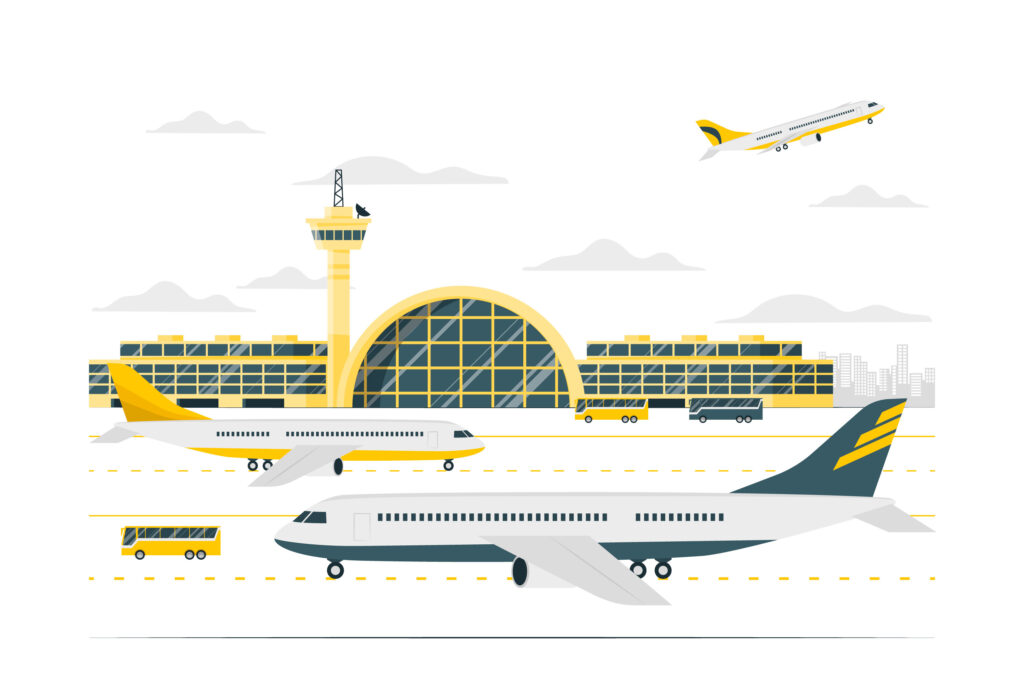Professionals have dedicated significant efforts to advance and enhance airport technology, aiming to improve the efficiency of passenger processing. The development of new equipment is ongoing to ensure the swift turnover of daily passengers. Safety has always been a significant priority, but with the emergence of Covid-19, it has become even more critical. Despite the pandemic, the aviation sector remains committed to upgrading its capabilities. One such trend that is currently being implemented and is set to continue in the future is the use of biometric facial recognition technology.
What Is Biometric Facial Recognition?
Facial recognition technology is a state-of-the-art system that utilizes biometric data to authenticate or identify individuals by analyzing their unique physical features. The process involves capturing images of faces using a camera and employing specialized software to compare and match them with stored information in a database. As this technology is commonly utilized in security and law enforcement, it is an essential component of the future of airport technology.
The Beginning
Facial recognition has been a subject of research since the 1960s, with early attempts to develop the technology for computers. Progress was made in the late 1980s, resulting in the earliest instances of automatic facial recognition. From the 1990s to the 2000s, the technology was primarily tested for law enforcement agencies and the U.S. government. Facebook implemented facial recognition in 2010, and it was later incorporated into the iPhone X in 2017.
Today, biometric facial recognition is increasingly utilized in various settings, from ensuring crowd management in stadiums, mega-events, and transportation hubs, to targeted advertising for marketing purposes. It also serves law enforcement agencies in tracking down suspects or missing individuals. One of the most common applications is on smartphones, which enables users to unlock their devices with ease.

The Role of Facial Recognition at Airports
Airport technology specialists are incorporating biometric facial recognition in airport procedures as a crucial aspect of its promising future. In 2019, the U.S. Customs and Border Protection (CBP) collaborated with domestic airlines in the USA to introduce biometric face scanners. JetBlue and Collins Aerospace also followed suit to improve passenger boarding procedures. The Asia-Pacific region also implemented facial recognition technology in numerous airlines.
The Middle East is also keeping pace with this technological advancement. Dubai, renowned as the leading smart city in the region, has implemented face and iris recognition software in its airports. Its “Smart Tunnel” allows passengers to pass through the tunnel system, completing passport control in a matter of seconds. This eliminates the need for traditional identity proof methods such as passport stamping or document presentation.
Saudi Arabia is also planning to introduce iris recognition technology for biometric identification not only in airports but also in its land and sea transport for enhanced safety measures. Bahrain International Airport is focusing on digitalizing airport operations to create a seamless passenger experience. To achieve this, the management is working on incorporating biometric verification for passengers as part of their intelligent approach.
Worries about Facial Recognition
Although the facial recognition industry is expected to experience significant growth in the years to come, there are still concerns among some individuals about the safety and ethical issues surrounding this technology. The primary concern is related to security, as hackers could potentially breach databases and use the information for fraudulent or harmful purposes. Some individuals are also worried that facial recognition is not solely being used for security purposes, but to monitor a person’s activities as well. For example, one US company reportedly uses face-scanning algorithms in its hiring decisions. Moreover, despite the advancements in technology, there is still the possibility of inaccurate results due to factors such as lighting or shade affecting the facial image captured in the system.
The Benefits of Facial Recognition Technology
As technology advances, more people are investing their time and effort to create innovations that make life more convenient. While there may be some concerns with facial recognition technology, it also offers several benefits. Security is a major issue, but it is also one of the main advantages of this type of technology. Biometric facial recognition accurately identifies passengers upon entering the airport, verifies passport information and visas, and ensures that they board the correct plane, providing a smooth passenger experience and reducing delays. This technology also addresses the concern of contracting illnesses, especially with the ongoing Covid-19 outbreak.
Biometric facial recognition has become a standard in the aviation industry, with more and more airlines adopting it. Despite concerns, the benefits of the technology outweigh its drawbacks. It minimizes the need for long queues and possible travel delays, and its efficient verification capabilities enhance airline security. With facial recognition technology, we can look forward to a brighter future for airport technology and an improved travel experience.




